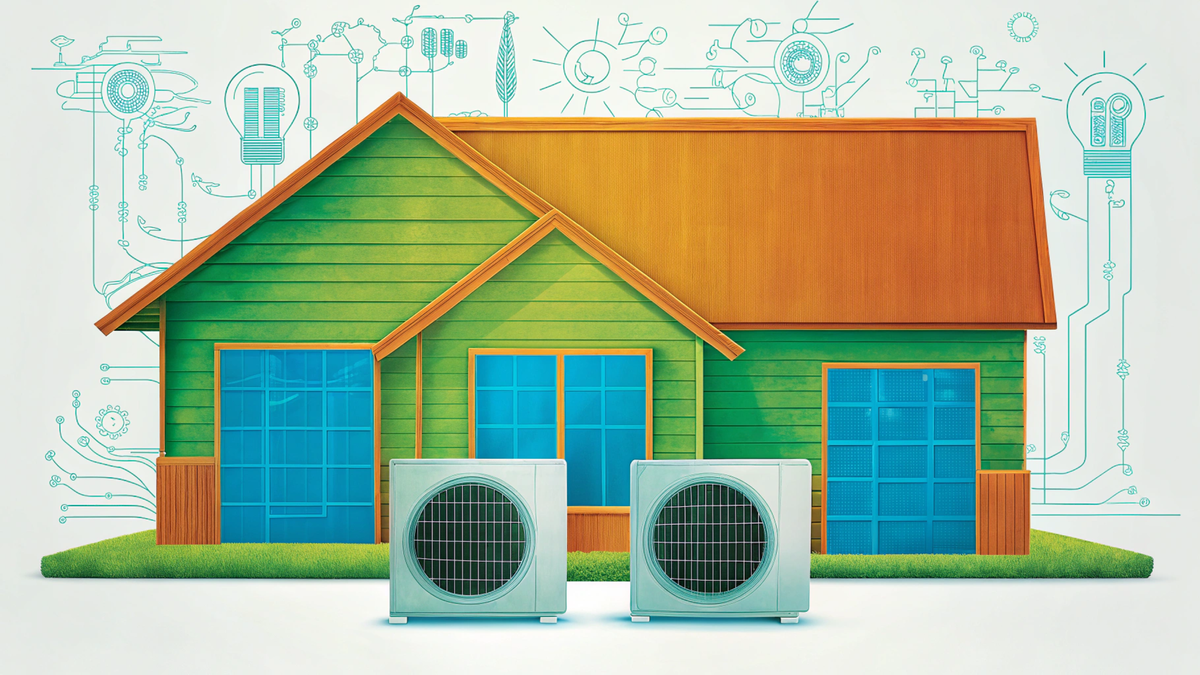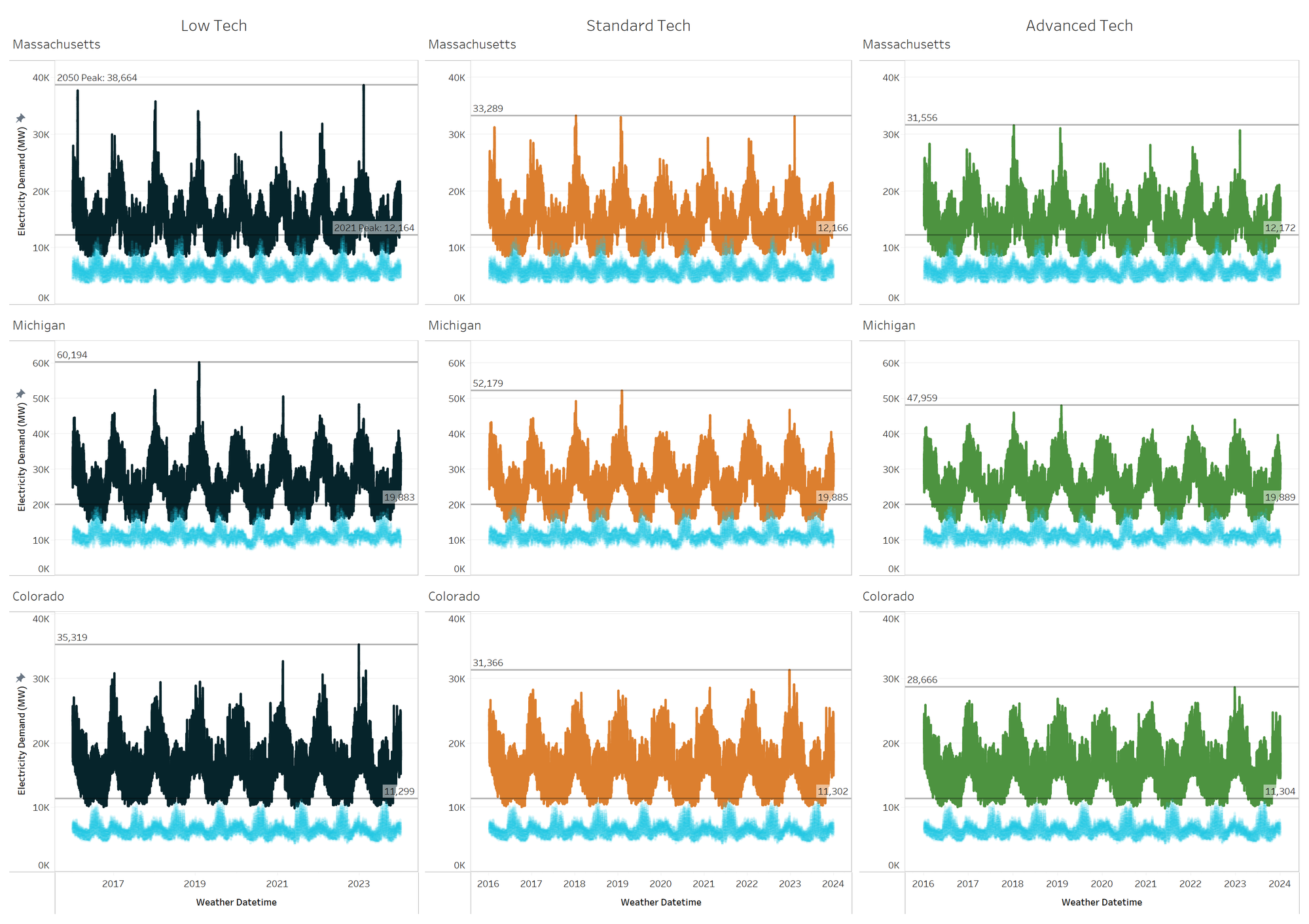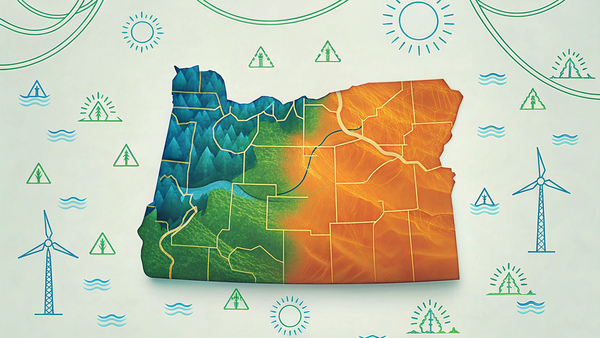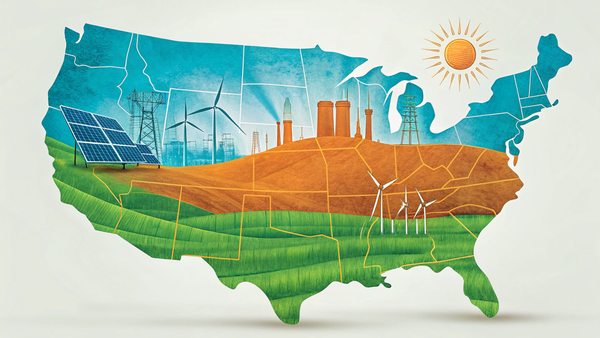Planning the Grid with Next-Gen Cold Climate Heat Pumps
With new advancements in cold weather heat pumps, planners may need to revise their assumptions about load growth, fuel backup, and system investments.

Residential Cold Climate Heat Pump Challenge: A Quiet Revolution in Home Heating
One of the most impactful initiatives to modernize home heating in the United States is quietly progressing beneath the radar: The Department of Energy’s Residential Cold Climate Heat Pump Challenge. This initiative has significant implications for residential electrification, particularly in colder climates, offering a viable path to reducing winter electricity peaks and substantially decreasing carbon emissions from buildings.
Launched in 2021, this underreported initiative brought together eight heat pump manufacturers–Bosch, Carrier, Daikin, Johnson Controls, Lennox, Midea, Rheem, and Trane Technologies–to develop innovative prototypes. These companies committed to designing climate heat pumps (CCHPs) that meet stringent performance criteria, such as ensuring that each heat pump could provide 100% heating capacity at 5°F with a minimum coefficient of performance (COP) of 2.1.
In January, Pacific Northwest National Laboratory (PNNL) released a field-validation report that showcases the success of the challenge and just how far heat pump technology has come in the past five years. Following the successful field validation, several manufacturers, including Carrier, Lennox, Bosch, and Trane, announced plans to commercialize their CCHP prototypes by early 2025.

Why This Matters:
Evolved Energy Research has partnered extensively with states and utilities to explore options for building heating—residential buildings in particular—in a decarbonizing energy system. This has been one of the thorniest issues for system planners due to the interconnected challenges of networked infrastructure, customer adoption, and nonlinear outcomes.
State planners have studied three main approaches for decarbonizing building heat:
- Maintain fuel systems, using carbon-neutral fuels or offsetting emissions elsewhere. Pro: maintains existing infrastructure; Cons: Relies on either offsets or expensive low-carbon fuel options, long-term viability is questionable as the economics with high-cost fuels drive electrification.
- Hybrid systems, combining fuels and electricity where fuels are used during the coldest hours. Pro: mitigates peak load and reliability issues; Cons: adds complexity to rate design and cost allocation for electricity and gas systems, can be difficult to implement for service areas where the gas and electric utilities are different, maintains costly fuel delivery infrastructure.
- Full electrification, with the goal of eventually pruning parts of the gas system. Pros: potential for deep decarbonization and long-term savings; Con: requires significant upgrades to electric infrastructure to satisfy coldest temperature days and involves a complicated exit from the gas system.
Our research has generally suggested that a fuel heating system becomes an unstable equilibrium in the long term, unless explicitly subsidized. Adding the cost of carbon to natural gas makes the fuel similar in cost to fuel oil (which heat pumps are currently out-competing in places like Maine). People can do that math, and they recognize that heat pumps are cheaper—especially when gas pipelines are involved—because as more customers leave the gas system, the fixed infrastructure costs are shared by fewer remaining users, driving up their bills.
By contrast, hybrid heating and full electrification scenarios have both been found to be reasonable strategies for decarbonization, but which option to choose is highly dependent on climate (and heat pump technology, as we will get to). The places we have studied in New England, such as Maine and Massachusetts, have lower modeled costs when choosing a full electrification strategy, while places like Michigan (without maritime climate influences), have seen lower cost when using a hybrid heating approach. If winters need to be as cold as Michigan for a hybrid approach to make sense, a notable takeaway is that most of the U.S. should likely pursue full electrification as a strategy for building decarbonization.
This rests on many assumptions and deserves caveats; for example, a disorderly exit from the gas system would be worse economically and structurally than no exit at all, but these geographic differences point directly to the crux of the issue. Full electrification is preferred unless it drives an extreme winter peak, necessitating large amount of backup generation and distribution upgrades. This last component is a critical but often overlooked factor. On average, half of a residential rate goes to pay for wires, and the goal should be to reduce rates by increasing load factors (the ratio of average to peak load) on all parts of the system. Extreme peaks during winter mornings to meet residential heating loads are not a recipe for increasing load factors and decreasing rates.
Where Cold Weather Heat Pumps Come in:
One uncertainty when conducting this analysis has been the future performance of heat pumps. The average annual efficiency has not been of greatest concern in our modeling; rather, the performance at very cold temperatures is often the focus. As temperatures drop, heat pumps have a more difficult time extracting heat from outside. This manifests as a decline in heat pump capacity and in declining efficiency, and every heat pump has an effective minimum temperature (called the lockout or cutout temperature) below which it will not be effective and needs to be supplemented with auxiliary heat sources (like electric resistance). For many legacy cold climates heat pumps this is somewhere near -5°F and contrasts sharply with gas furnaces, which maintain constant capacity and efficiency regardless of outdoor temperature. (As an exercise, the reader can Google "typical heat pump lock-out temperature." At the time of this writing, the AI overview states "A typical heat pump lockout temperature is generally set between 35°F and 40°F," which is only appropriate for hybrid systems and woefully out of date with new models.)
Efficiency with declining temperatures is shown for three different heat pumps in Figure 1:
- Advanced tech – modeled on Lennox signature SL22kLV series heat pump, one of the prototypes from the DOE challenge that has recently been commercialized (green).
- Standard tech – earlier Mitsubishi Hyper‑Heat and what Evolved Energy Research has used to represent our cold weather heat pump performance over the past few years (orange).
- Low tech / legacy – lower efficiency heat pump that we generally assume in our modeling gets paired with a fuel furnace, though it is shown even in fully electrified homes in the following results (blue).
Figure 1. Electricity Demand for Heating vs. Outdoor Temperature
This chart shows how heat pump efficiency (COP) varies with outdoor temperature. Advanced technology heat pumps maintain higher efficiency at colder temperatures, providing better performance in winter conditions.
To quantify the impact of improved heat pump technology, we integrated each of the heat pump efficiency scenarios into our EnergyPATHWAYS model. Results were produced by state for weather years 2017-2023 using a high electrification pathway from our 2024 Annual Decarbonization Perspective. While adoption of heat pumps was the same in each scenario, the heat pump technology is based on the technology performance in the last figure and is simulated by county. This allowed us to isolate the effect of evolving heat pump performance on winter peak load.
Figure 2. Hourly electricity demand in 2050 after high electrification under different heat pump performance assumptions

Summary of Findings:
We picked three states with cold winters to show in the hourly electricity demand figure, above. The peak load in 2050 for each of these states declines significantly with the more advanced heat pumps, which also implies substantial cost savings. In Massachusetts, for example, reducing peak load by 1,700 MW when going from the Standard to Advanced heat pump technology would save nearly $350M per year (assuming an avoided cost of $200/kW-year for reducing residential peak load).
The variability of peak load is also reduced with improved heat pump technology, creating easier conditions for planning. The spikes in demand, especially seen with the low technology sensitivity, are periods when temperatures are below the cutout temperature for the heat pump and electric resistance heating is being used. In the advanced tech sensitivity, the cutout temperature is -20°F, and this temperature is not seen across these states in these particular historical years. Still, an important consideration is that temperatures colder than -20°F do, in fact, occur in these states. Our modeling showed that Illinois (not shown) had a historic cold snap on January 31st, 2019, with temperatures reaching -23°F in Chicago. This presents real challenges, and we may take on this question in a future Staying Current post.
Separate from the cutout temperature, these results do bring up heat pump sizing as a critical factor in reducing system peaks. As noted, heat pumps lose capacity as temperatures drop, and even if the coefficient of performance remains above 1. If the heat pump cannot keep up with heating demands, supplemental electric resistance heating will often get used. The backup heating helps maintain indoor temperatures but results in a significant increase in electricity load compared to the situation where a larger heat pump could handle the full heating demand.
The overall implication of the declining system peaks with improved heat pump technology is that the relative competitiveness of whole home electrification is increasing compared to other hybrid heating or clean fuel options. This is the continuation of a decades long trend that began with whole home electrification really only being viable in the southern U.S. The ongoing evolution of heating technology is something policy makers, regulators, and utilities need to continue to stay on top of as it has big implications for system planning.
Finally, while advancing cold weather heat pumps do alleviate some of the challenges with building electrification, namely adverse impacts on electricity systems, they don't address the other challenges that arise from policy makers attempting an orderly, fair, and timely exit from gas distribution feeders. With technology rapidly advancing, renewed attention needs to be paid to just how such a transition will be accomplished in the states pursuing this pathway.






